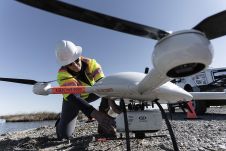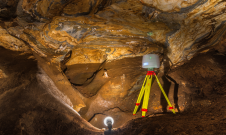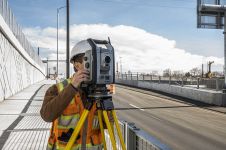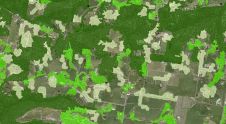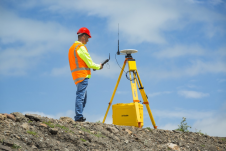点云(1)
The Functionalities of Processing Software
Whether based on Lidar, photogrammetry, radar, sonar or other remote sensors, systems for geodata acquisition create millions or even billions of 3D points. To be useful, the data needs to be organised, combined, georeferenced, measured and analysed, and that in turn requires software. This article first defines what point clouds are and identifies their sources. It then goes on to examine software functionalities such as visualisation and editing. The July 2014 edition of GIM International will be a themed issue covering collection and processing of point clouds and hence will include a selection of the many software packages currently available.
A point cloud is a set of data points represented in a preferred coordinate system. The dataset consists of measurements taken at discrete points of a curved 2D surface in 3D space. This 2D surface may be smooth or it may contain discontinuities such as facades of building. The number and density of the points should be such that the 2D surface can be reconstructed, i.e. at every point on the surface a value can be calculated from the measured values in the vicinity. This process is called ‘interpolation’. The initial data is unorganised; processing software is needed to organise the unorganised into a point cloud and extract information from it.
点云
In principle, the curved 2D surface can represent any instance such as soil pollution, forest biomass, rainfall, terrain elevation or the seabed. In the field of geomatics, the phenomenon will usually be the terrain surface or the seabed in the form of a digital elevation model/digital surface model (DEM/DSM). The tools used to acquire the point cloud can include: levelling; GNSS; terrestrial laser scanning (TLS); airborne Lidar; airborne or spaceborne radar; terrestrial, aerial or spaceborne photogrammetry; or multibeam sonar. Another source can be contour lines digitised from maps. This article focuses on point clouds from which DEMs or DSMs can be created and products can subsequently be derived (Figure 1). These products can then be used in a variety of applications. For forest inventory, for example, the height of individual trees, the density of the canopy, biomass and the stand volume can be calculated, while in road construction volumes and masses can be calculated from a DEM to support earthworks. By comparing time series of DEMs, ore extraction of an open-pit mine can be determined as well as erosion and accumulation of sand in dunes to support flood risk management. The point cloud data consists of a set of x,y coordinates to which height/depth values have been assigned: one value per x,y location. Added to height or depth, other attributes may be attached to the x,y component, such as reflection intensities of the laser/sonar pulse or RGB of a colour image recorded by a camera at the same time (Figure 2). Hence, the x,y component and its attributes forms the nucleus of the point cloud and the number of nuclei may run into billions.
Sources
绝大多数点云源于活动系统的输出,包括机载激光雷达,TLS,雷达或声纳,后者主要用于映射海床和河床。得益于过去二十年来基础技术的进步,现在很容易以很高的速度生产高分辨率的地形数据。例如,对于海底映射,从单梁到多梁回声器的转变增加了可以获取到每天数十亿个回声回报的数据量。从LiDar和Sonar的回报首先以范围,角度和时间的形式存储。然后将它们与3D位置数据(纬度,经度和高度)集成,该数据由IMU测量的板上GNSS和姿势数据(滚动,俯仰和标题)收集,通常与GNSS集成和探测仪。原始数据的集成在很大程度上是自动化的,并导致经常需要编辑以删除异常值和其他不当点。通常,点云以常规网格或三角不规则网络(TIN)的形式转移到2.5D表面。这些产品通常充当CAD,BIM和其他工具的投入基础,以创建各种产品,例如轮廓,航海图,体积或3D景观模型。除此之外,输出应采用CAD,水文和其他面向应用程序的软件可读的格式。 Point clouds may also stem from overlapping imagery, captured by nadir-looking or oblique cameras, using photogrammetric image-matching software. The cameras may be mounted in manned or unmanned airborne systems. Lidar point clouds are captured either in the air or from ground stations whereas radar sensors are either mounted on aircraft or are orbiting.
Continue reading in the online edition of GIM International.
使您的收件箱更有趣。Add some geo.
Keep abreast of news, developments and technological advancement in the geomatics industry.
免费注册














